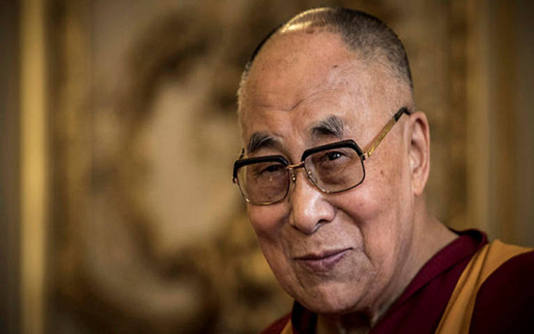PARIS, March 15, 2019 (BSS/AFP) – In March 1959 Tibet’s ruler and
spiritual leader, the Dalai Lama, fled his homeland amid a deadly Chinese
crackdown, escaping to India in a gruelling two-week trek.
There he would form a government-in-exile and demand autonomy for Tibet,
going on to earn international renown and respect while remaining a bete noir
for China.
Here is an account of his dramatic escape.
– Tibetans revolt against Chinese –
Buddhist Tibet, a vast Himalayan area of plateaus and mountains, declared
independence from China in the early 20th century.
But China took back control in 1951, having sent in thousands of troops.
Lhamo Dhondup, chosen at the age of two in 1937 as the 14th incarnation of
Tibetan Buddhism’s supreme religious leader under the name Tenzin Gyatso, was
enthroned as head of state after the Chinese invasion.
His co-existence with the Beijing authorities was tense and when the
Chinese authorities summoned him to an event without his bodyguards on March
10, Tibetans feared a trap that could endanger their leader.
Thousands assembled at his summer palace to prevent him from leaving;
thousands more demonstrated in Lhasa to demand the Chinese depart, the Dalai
Lama would later say.
Beijing poured more troops into Tibet: as tensions mounted, they opened
fire on March 17, targeting and eventually razing the Dalai Lama’s palace.
The revolt was suppressed by March 21, ending in a bloodbath. The
government in-exile later claimed the Chinese army killed tens of thousands.
– Dalai Lama disappears –
The outside world was largely unaware of the turmoil engulfing isolated and
remote Tibet. Only neighbouring India had diplomatic representation there and
rare reports of the unrest trickled out via its media.
On March 22 AFP reported from India that there was concern over the fate of
the Dalai Lama, then aged 23, who seemed to have disappeared.
“According to some rumours, the young man could be in his Lhasa palace or
under Chinese military guard,” the report said, citing India’s The Statesman
newspaper.
It later emerged that he had been able to slip past Chinese troops massed
around his palace on March 17, another AFP story said.
– A great escape –
He left the palace dressed as a soldier and met up with a group of Tibetan
resistance fighters 60 kilometres (37 miles) out of Lhasa, AFP reported,
again citing The Statesman.
His entourage included his mother, sister, younger brother and several top
officials.
They travelled for two days and two nights without stopping, on foot and
on horseback, AFP later cited a Tibetan official as saying.
A month’s supplies were carried by mules. To cross the major 457-metre-
wide (1,500-foot) Brahmaputra river, they used a single boat made of yak
skin, the official said.
The group then continued on foot, walking only at night through the harsh
Himalayan terrain. They had a head start on Chinese troops who had not
realised the Dalai Lama had disappeared until two days later, only then
sending out a ground and air dragnet, and combing monasteries where he could
be hiding.
It was “one of the most fantastic escapes in history”, an AFP story said.
– Arrival in India –
On March 31 the Dalai Lama walked across the border into the Indian state
of Assam.
“The Dalai Lama entered India on March 31 in the evening,” Prime Minister
Jawaharlal Nehru announced on April 3, AFP sending out the information in a
top priority flash.
In mid-April an official statement provided details of his escape. “It is
thanks to the affectionate support and the loyalty of his people that the
Dalai Lama was able to make his way, by an extremely difficult route,” it
said.
It denied a Chinese claim that he had been forced into exile.
“The Dalai Lama wishes to categorically state that he left Lhasa and Tibet
and came to India of his own free will and not by force”, it said.
– Government-in-exile –
India granted the Tibet leader asylum on April 3 and permission to
establish a government-in-exile in the northern hill station of Dharamsala,
already a sanctuary for thousands of Tibetan exiles fleeing Chinese
repression.
From there he launched a campaign to reclaim Tibet, gradually easing this
into an appeal for greater autonomy.
Talks between the two sides failed, China adamantly rejecting any
suggestion of Tibetan autonomy and blacklisting the Dalai Lama a dangerous
“separatist”.
Beijing continues to be accused of political and religious repression in
the region, but insists Tibetans enjoy extensive freedoms and that it has
brought economic growth.
More than 150 Tibetans have set themselves on fire since 2009 in protest
against Beijing’s presence in Tibet, most of them dying.
The Dalai Lama, who gave up his political role in 2011 but remains based in
Dharamsala, has gained worldwide respect for his pacifist approach, winning
the Nobel Peace Prize in 1989.



